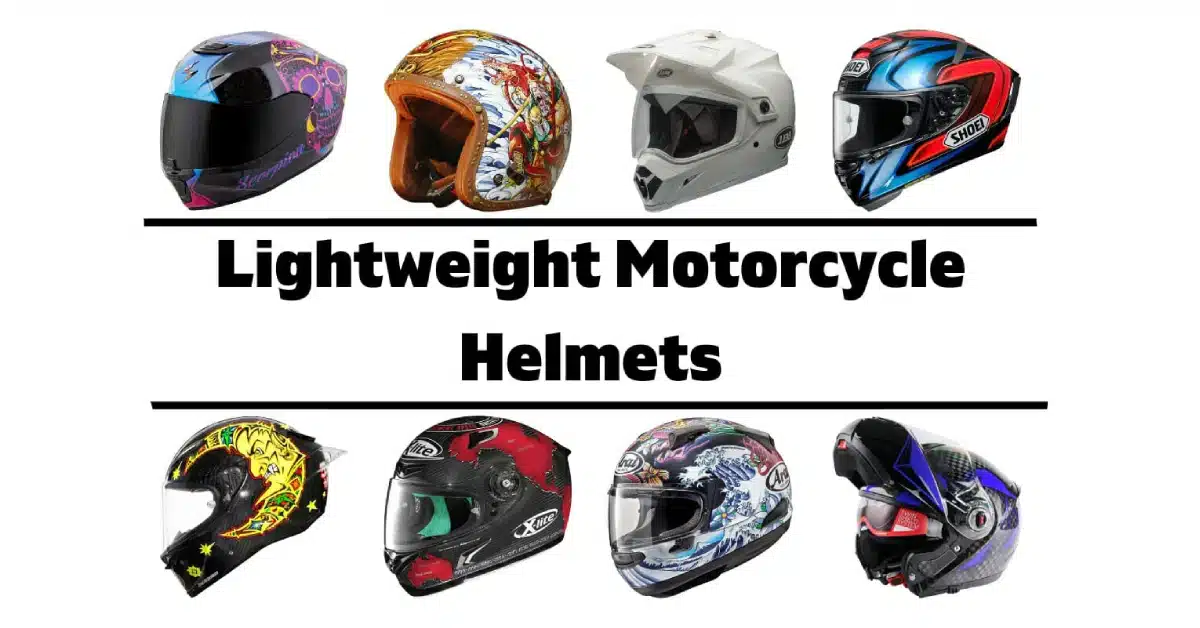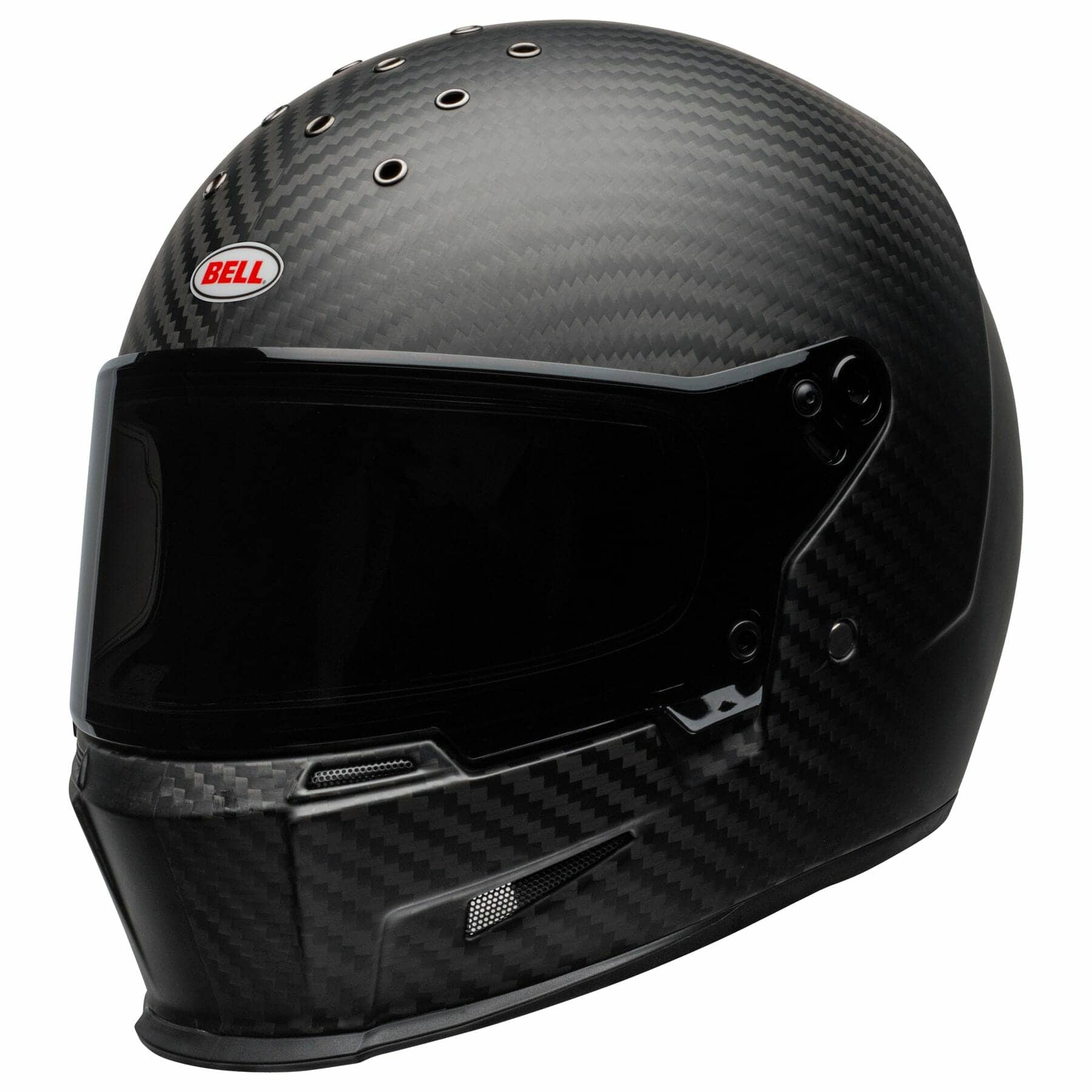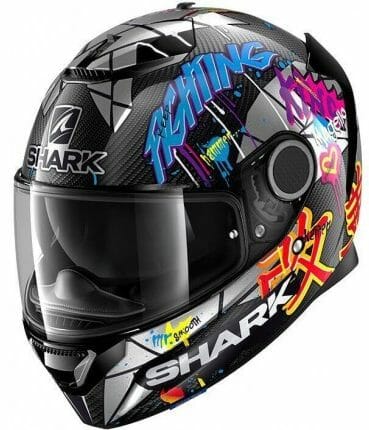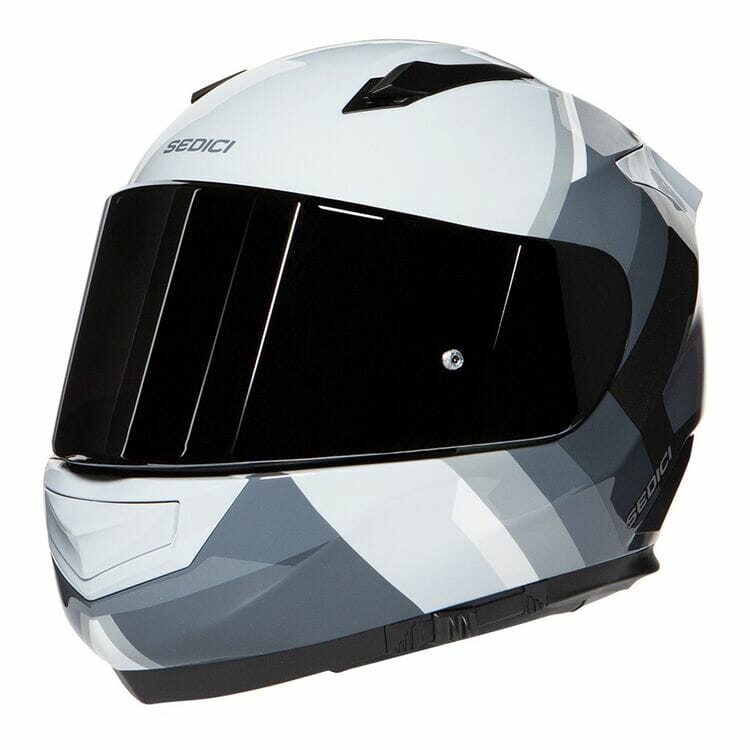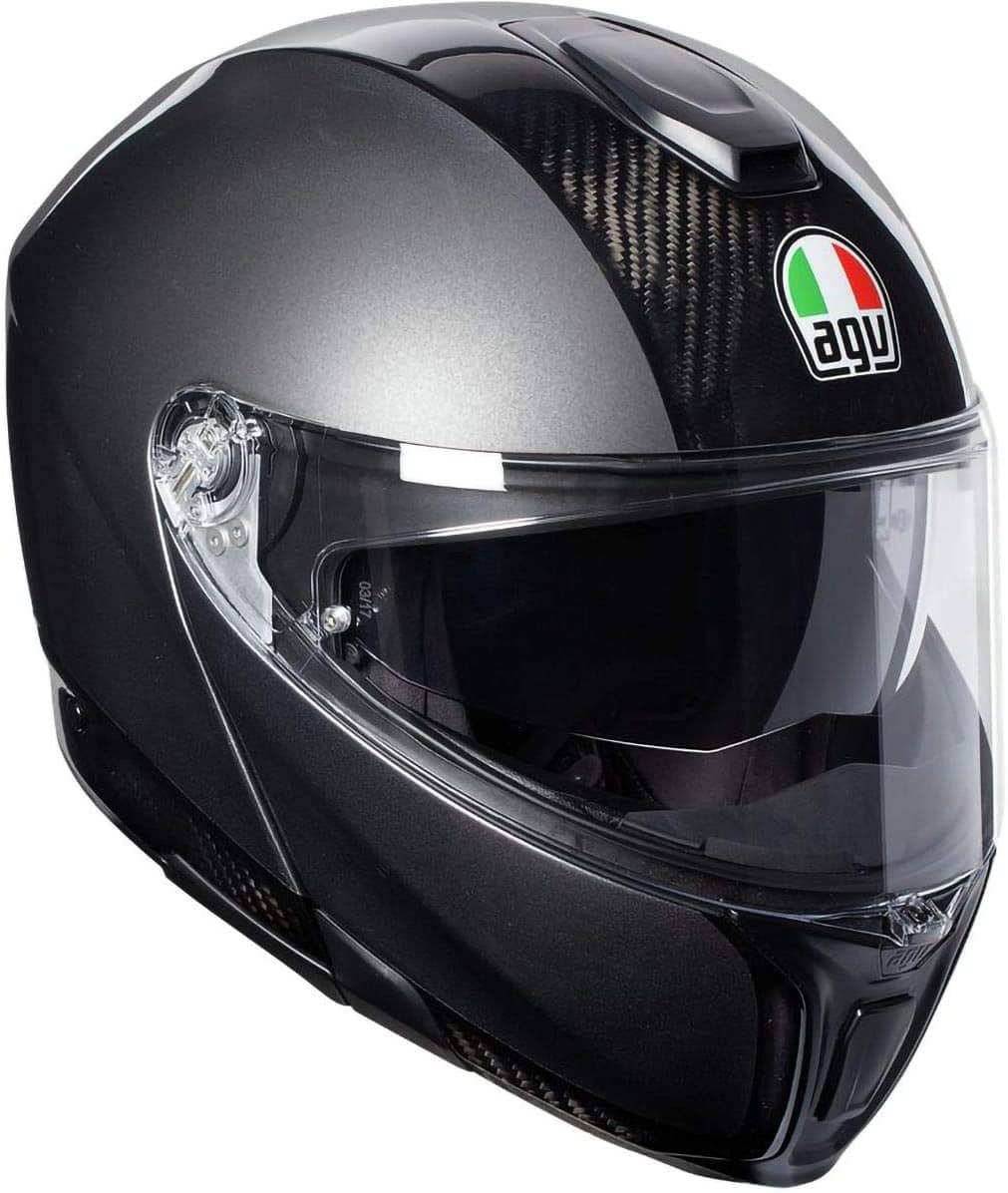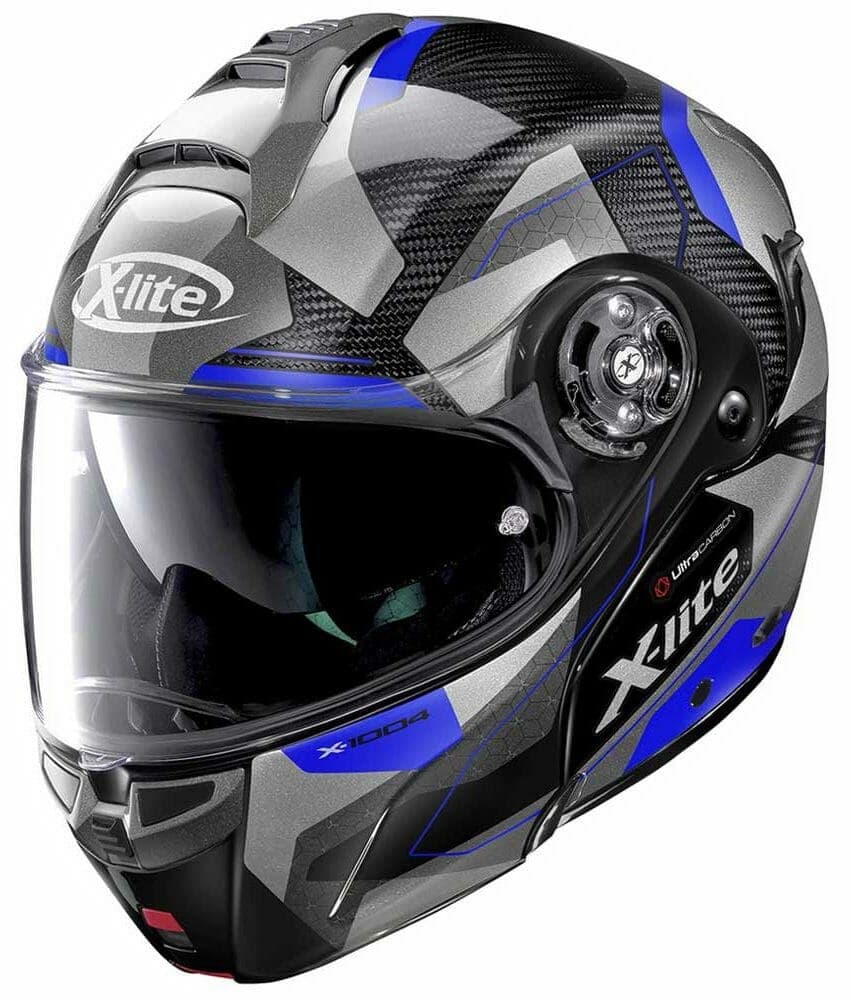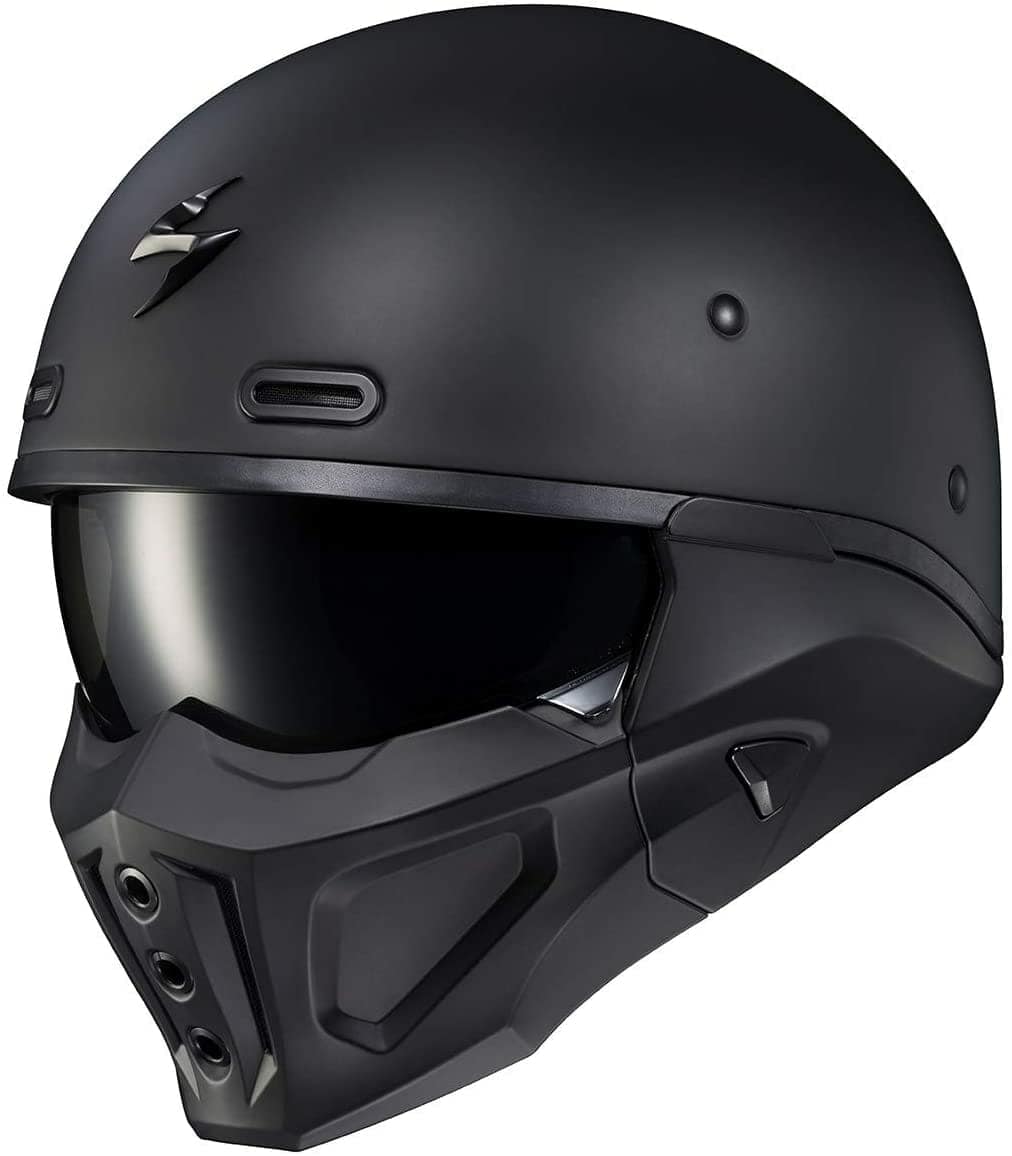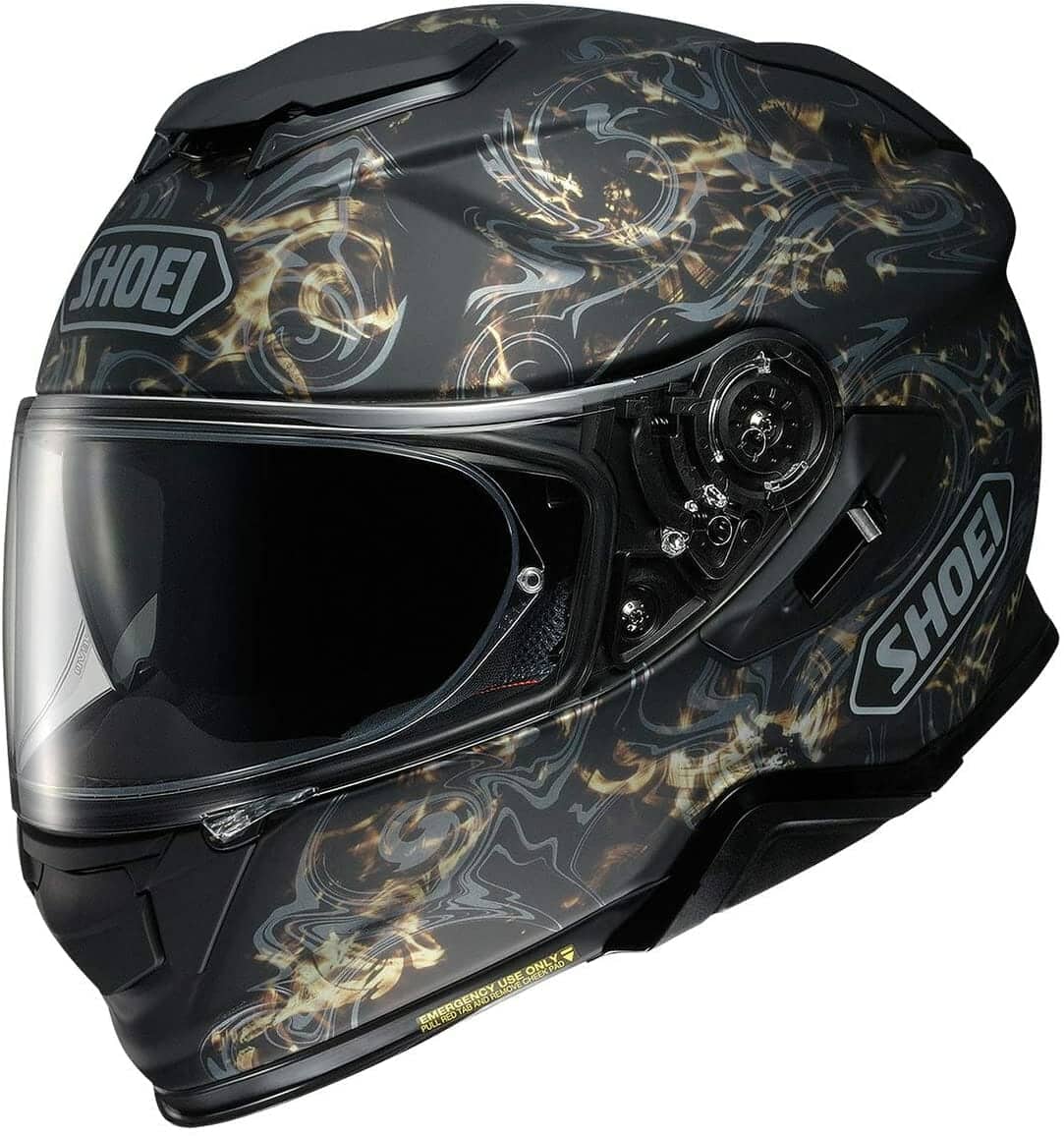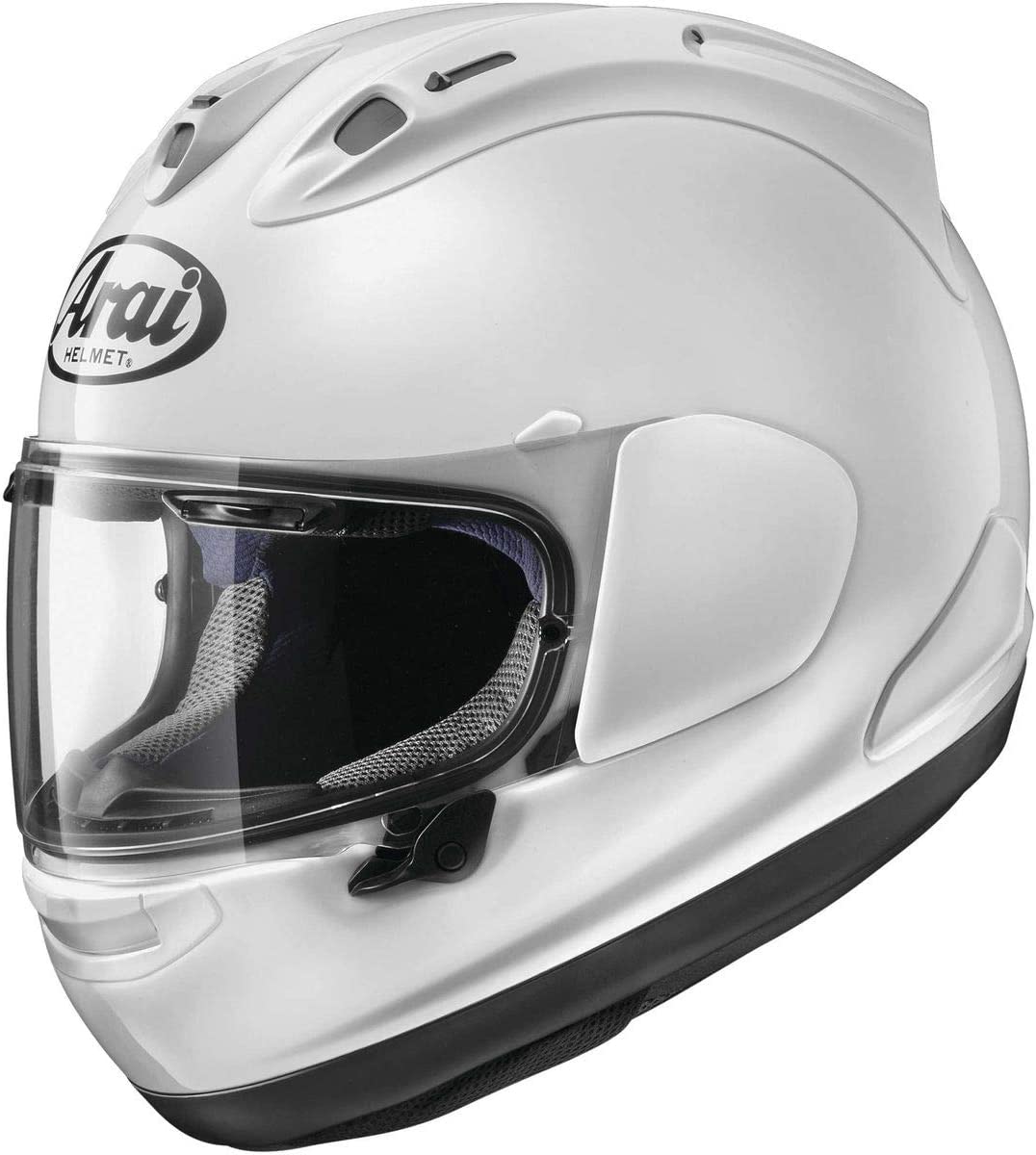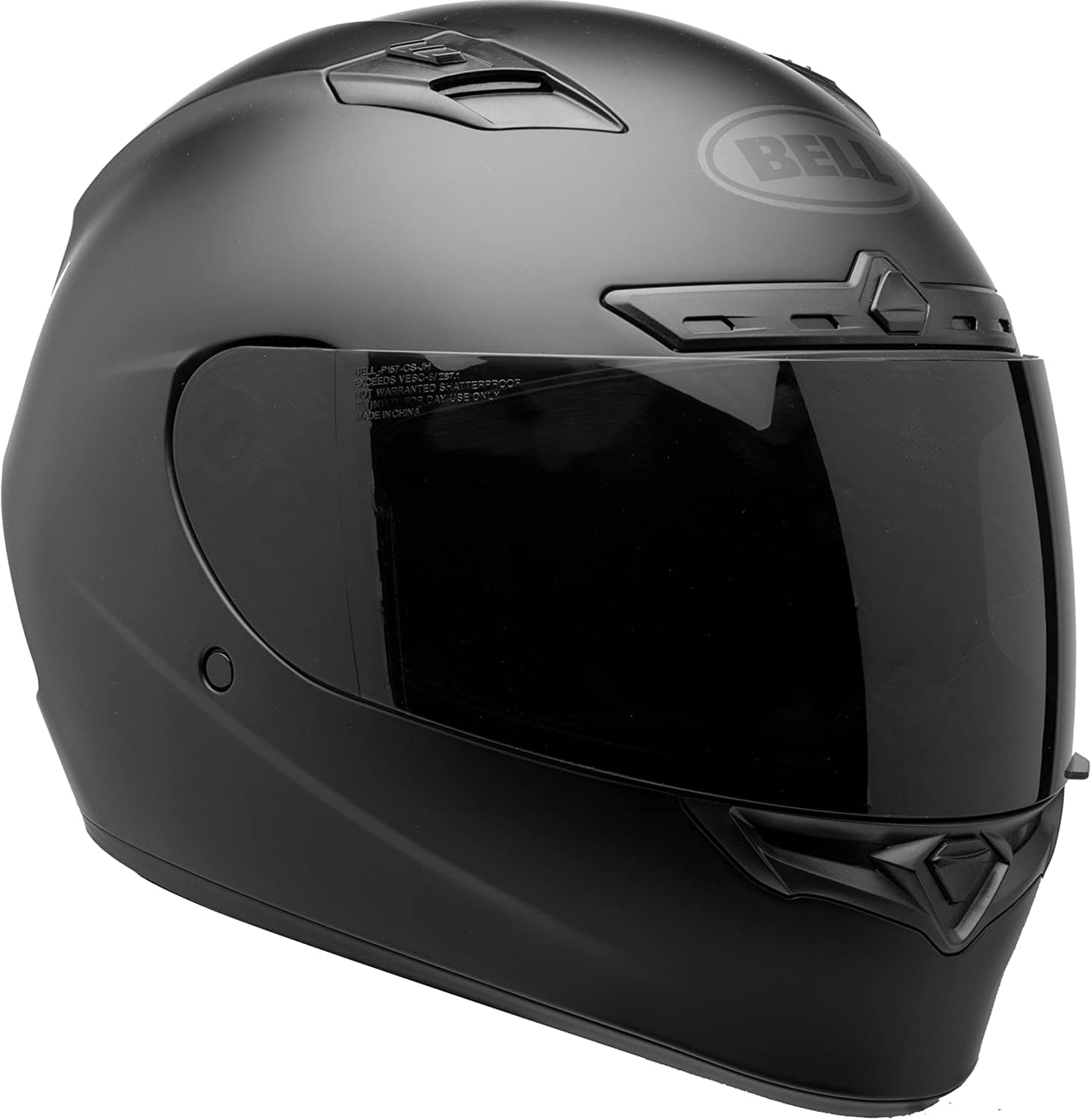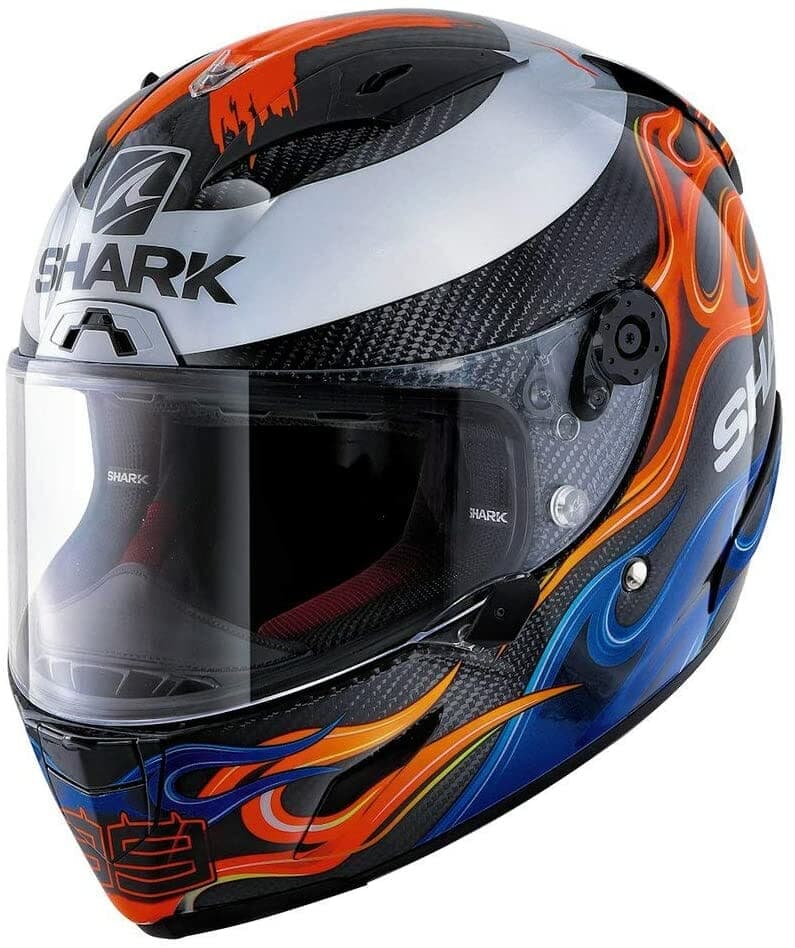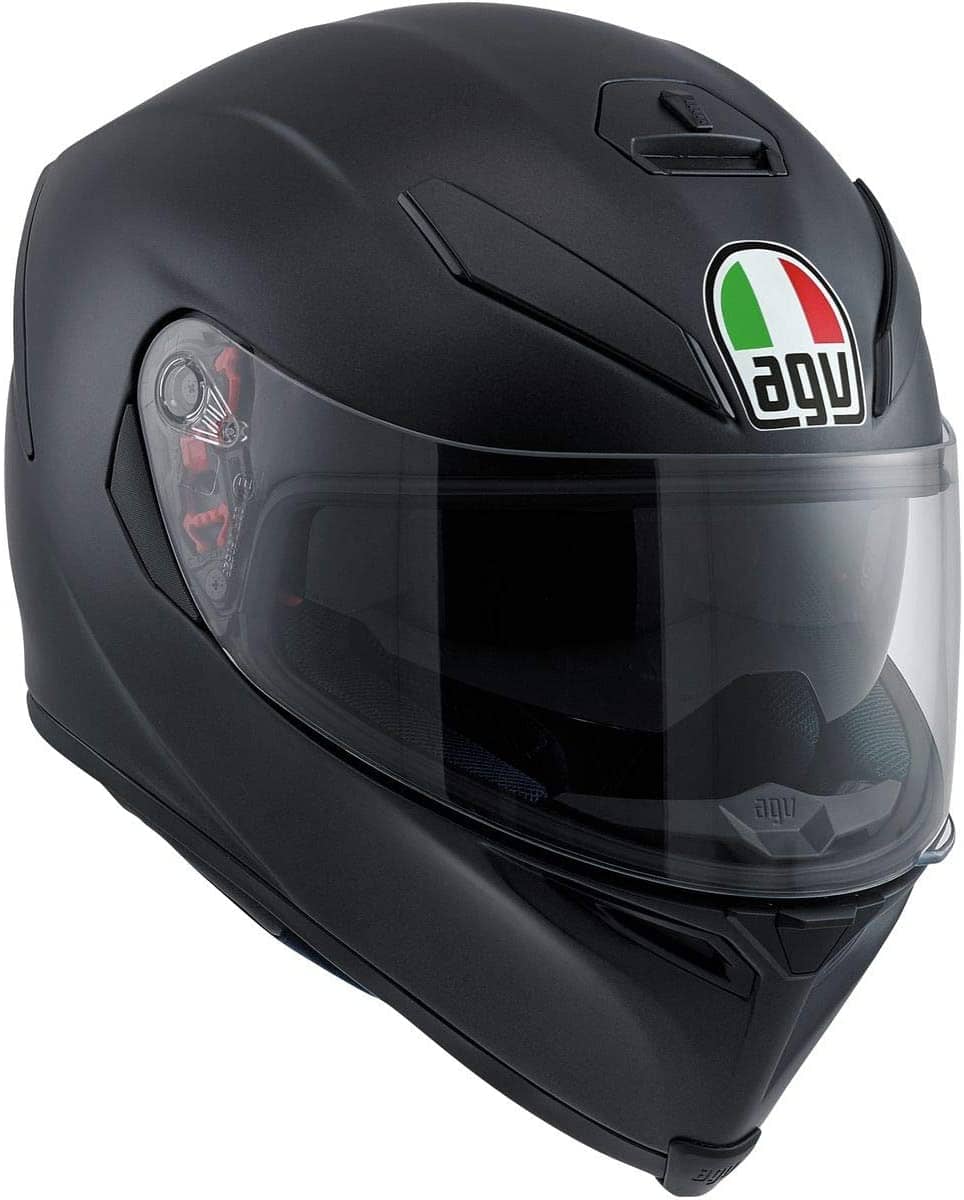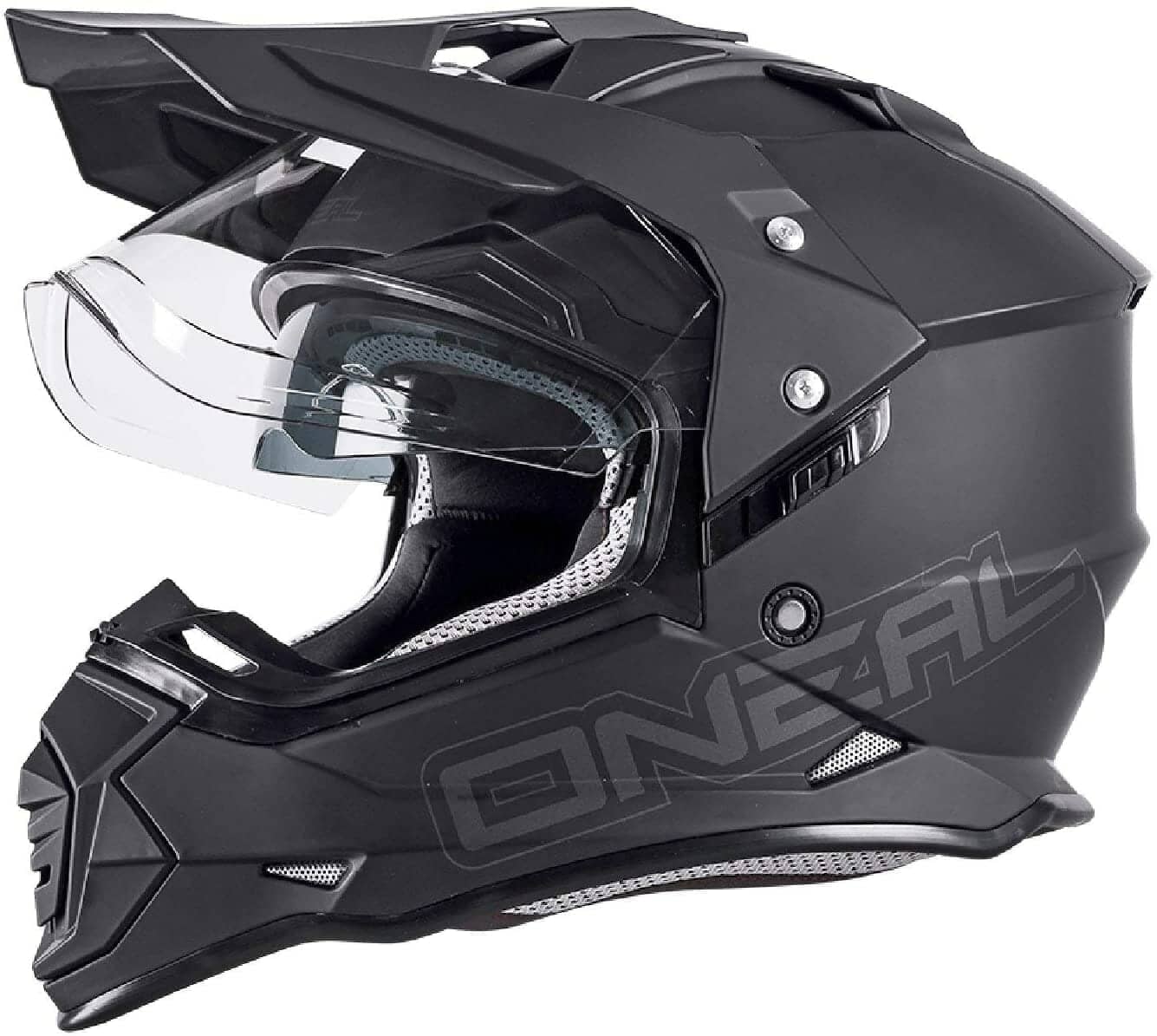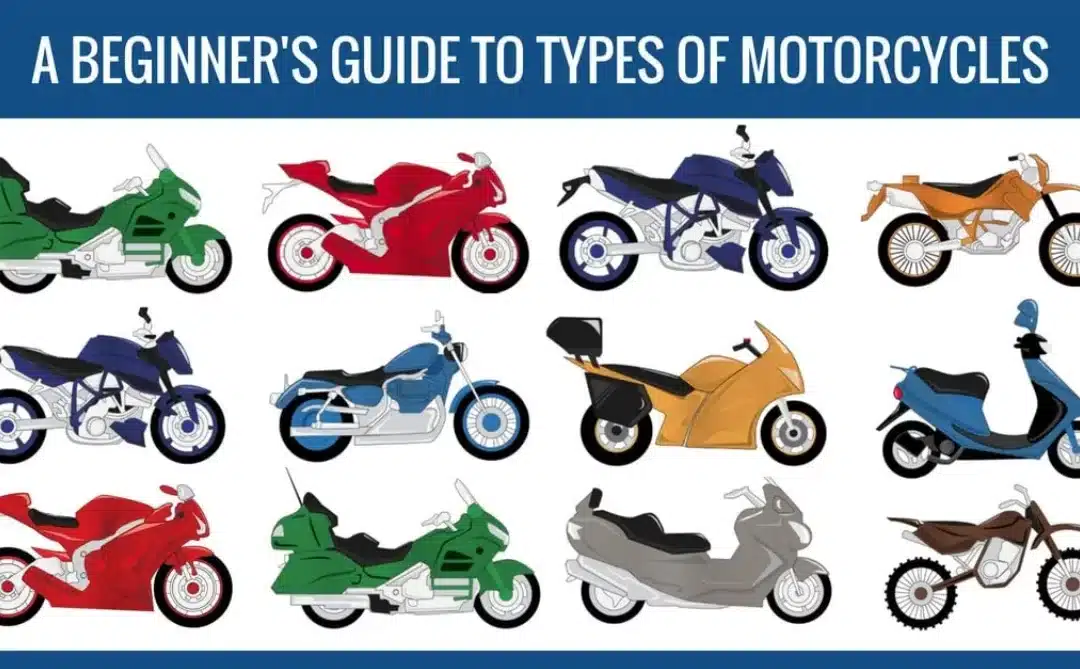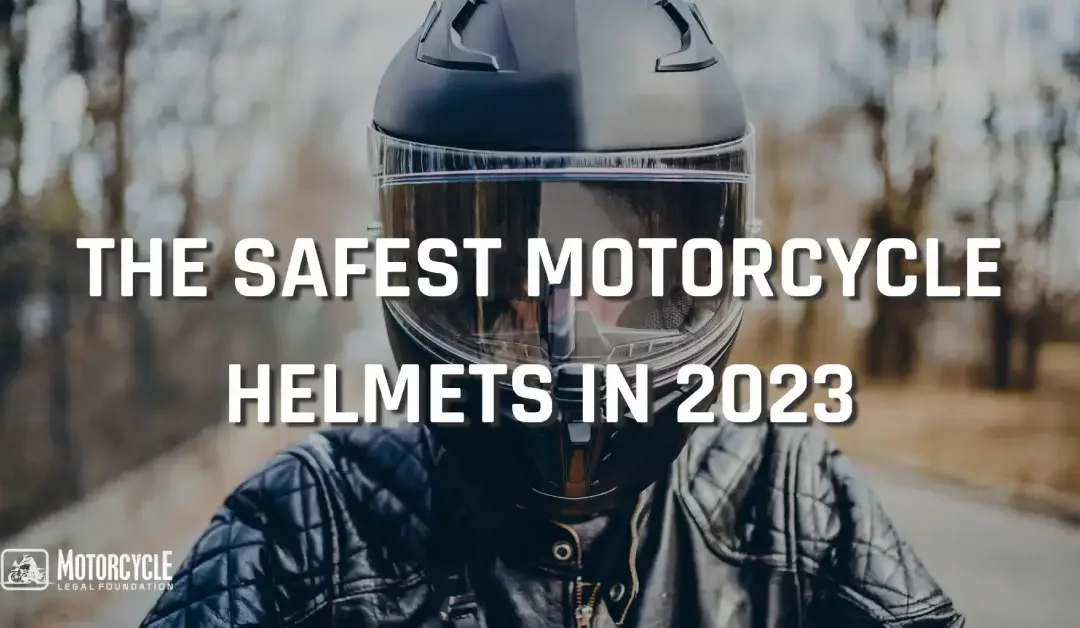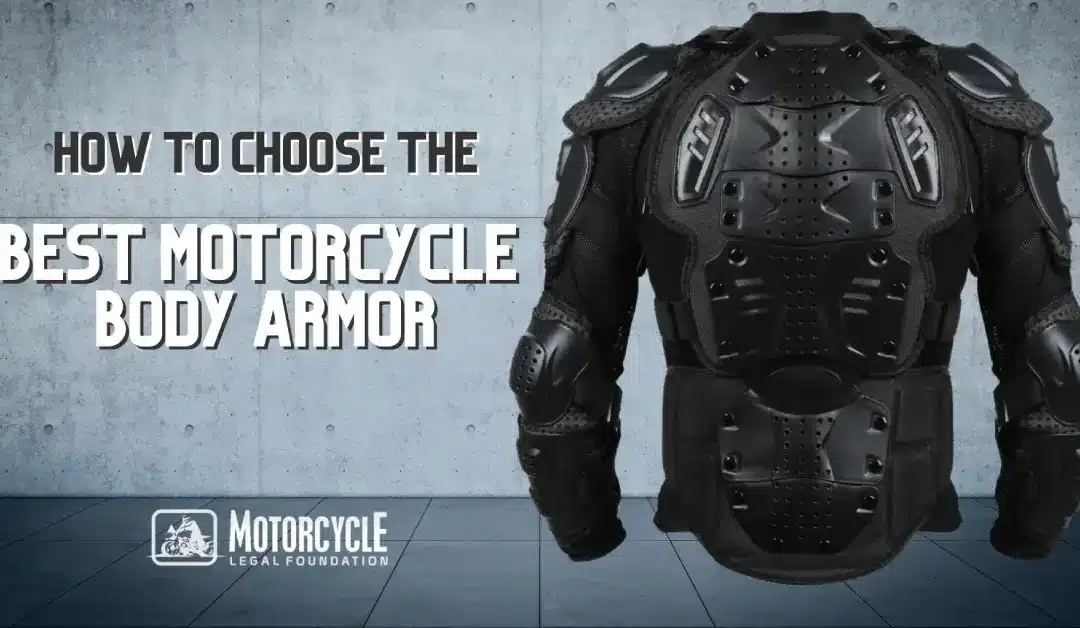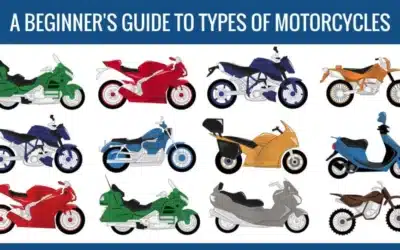A BRIEF HISTORY OF LIGHTWEIGHT MOTORCYCLE HELMETS
In 1914, a British physician, tired of seeing motorcycle head injuries every two weeks, came up with the first motorcycle helmet. Made of little more than stiff canvas covered in shellac, it still managed to do its job and saved a rider from a severe head injury in the 1914 Isle of Man race.
Today, modern helmets are considerably more sophisticated thanks to over a century of evolution and refinement. However, they are also much more substantial, with full-face helmets weighing up to 4 lbs. Modular helmets are even heavier due to their flip-up mechanisms. Then there are strict safety standards and accessories, all of which pile on weight.
To lessen the load, manufacturers came up with lightweight versions of motorcycle helmets. These helmets, made of sophisticated materials derived from racing and aerospace applications, offer adequate protection without the corresponding weight penalty.
ENGINEERING OF LIGHTWEIGHT MOTORCYCLE HELMETS
Motorcycle helmets have three components: the outer shell usually made of plastic polymers, an inner shell to cushion physical impact, and a liner for comfort.
For the outer shell, the typical helmet uses thermoplastic materials like polycarbonate or ABS. More expensive helmets use composite materials such as a mix of fiber and resin to lessen weight while retaining the same protection level. Premium helmets use exotic materials like carbon fiber and kevlar to offer the least possible weight.
For the inner layer, most manufacturers use expanded polystyrene foam or EPS(Extended Polystyrene). This layer is designed to crush upon impact to cushion the head.
Finally, there’s the padding, which provides comfort and ensures a snug fit for those long hours of riding.
The thickness of the inner EPS layer and padding can also add weight, but not as considerably as the material used in the outer shell.
HOW MUCH DOES EACH TYPE OF MOTORCYCLE HELMET WEIGH?
In terms of weight, “beanie” helmets are the lightest. Beanies are the modern evolution of the half-shell helmets now prohibited by the Motorcycle Safety Foundation. These cover only the top of the head and usually weigh below 3 lbs. However, they are the least safe type of helmet and may not be legal in some jurisdictions. They also require separate goggles.
Open face helmets come in second on the weight scale at just over 3 lbs. Also known as ¾ helmets, they offer more protection by covering the whole head and exposing the face. Some come with half or full-face visors.
Full-face helmets provide the most protection and are considered the safest because of their extensive coverage of the head and neck. They are distinguished from open face helmets by integrating a fixed chin bar at the expense of weight, which ranges from 3-4 lbs.
At the end of the scale are modular helmets, which combine the protection of full-face helmets with open face exposure in one flip. This design enables riders to lift the facial cover when desired without having to remove the whole helmet. While convenient, the hinge structure significantly adds weight, causing it to go over 4 lbs for most models.
ACCESSORIES
The last factor that adds weight is accessories. These can include aftermarket visors, face shields, breath guards and deflectors, neck rolls, and even BlueTooth speakers.
Beyond hardware add-ons and simple accessories, some cutting-edge helmets integrate HUDs, augmented reality, and even voice assistant connectivity. While they can make you feel like Iron Man talking to your very own Jarvis, all these high-tech add-ons come at a stiff cost — not just for your pocket but for your neck.
WHAT TO CONSIDER IN A LIGHTWEIGHT MOTORCYCLE HELMENT
Now that you know what goes into making a lightweight helmet, how do you pick the ideal one that’s right for you?
- Use – Are you looking for a helmet to commute with? Then full-face or modular might be the right choice to ensure maximum protection. Perhaps you’re looking to gear up for the occasional joyride? A touring helmet might be more suitable for those long rides. For cruisers and bikes that use an upright riding position, modular helmets provide more visibility. If you like to hit the trail, a dual-sport design is right up your alley.
- Cost – While the typical SNELL helmet can cost less than $200, top-tier helmets with premium lightweight construction can cost three times as much. Composite material helmets like carbon fiber weave and kevlar typically start at $500-600, so if you want an ultra-light bucket, be prepared to have an ultra-light wallet.
- Safety – To shed excess weight where possible, some lightweight helmets may have a thinner or low-density EPS layer. Make sure to do your homework and look up the Snell rating, in addition to the DOT, European Standard, or SHARP rating for the helmet, depending on your location.
- Expandability – Most lightweight helmets are stripped down to the basics, so make sure to factor in the upgrade options down the road. See if it’s compatible with replacement liners or can accommodate sunscreen, BlueTooth headsets, and hydration packs. It’s also worth researching what accessories there are for that specific helmet, and if they are aftermarket or proprietary.
THE BEST LIGHTWEIGHT HELMETS OF 2022
With that out of the way, here are the best lightweight helmets you can buy this year, categorized by type and budget level.
Some of these categories overlap, and some helmets do have dual purposes. So if you dig one of our sport helmets but need a helmet for commuting, you can use the sport-helmet just fine. *Note that the listed prices of helmets are dependent on size and timeline

